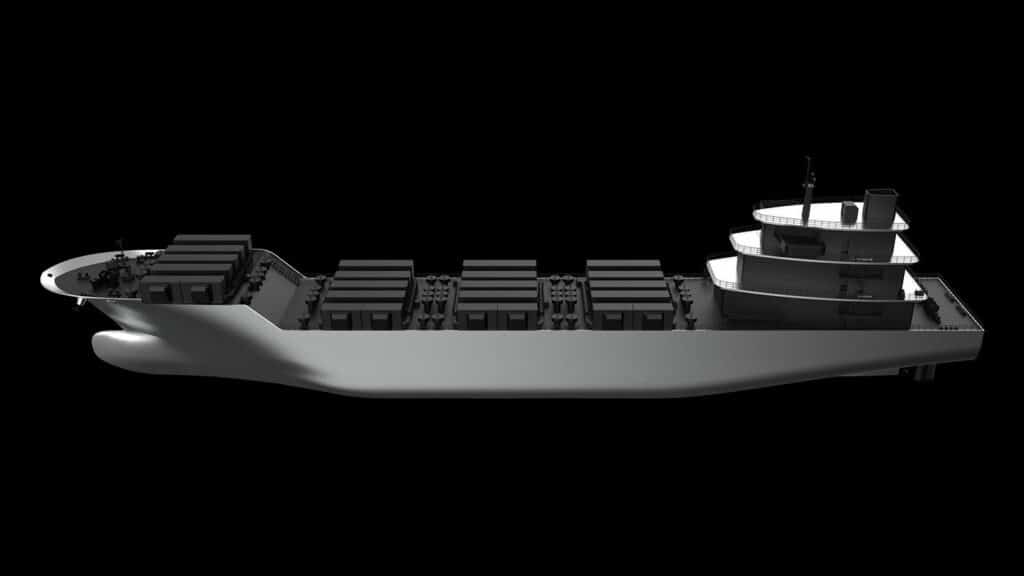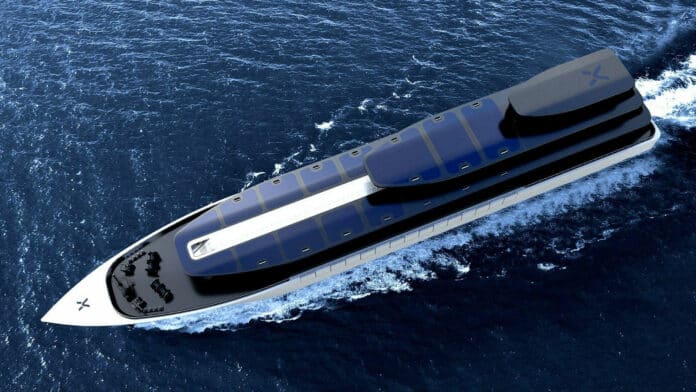Japanese-based clean energy startup PowerX unveiled the first-ever ‘Battery Tanker’ detailed design at the Bariship International Maritime Exhibition held in Imabari City, Ehime Prefecture, Japan. The inaugural ship ‘X’ aims for completion by 2025, with domestic and international field testing planned to commence in 2026.
The first Battery Tanker X boasts a length of 140 meters and will be equipped with 96 containerized marine batteries, providing a total capacity of 241MWh. The onboard battery system is based on the company’s proprietary module design, featuring safe and reliable lithium iron phosphate (LFP) battery cells that ensure a lifespan of over 6,000 cycles.
In addition, the battery system includes dedicated gas emission control and fire suppression mechanisms to ensure safety. Real-time monitoring of the battery system, charging controllers, and power conversion systems further enhance safety measures.
The battery system is highly scalable, allowing for the installation of additional batteries to create larger electric transport vessels such as Power Ark 1000 or even larger sizes to meet specific mission requirements. The system includes dedicated gas emission control and fire suppression mechanisms to ensure safety.
According to the company, all batteries will be manufactured in-house in Okayama Prefecture and are expected to receive international ship classification certifications and applicable standards such as DNV and Class NK, undergoing rigorous testing to meet the strictest conditions. Delivery of the batteries is scheduled to commence by mid-2024.

The onboard battery systems allow Battery Tankers to store and transport surplus electricity generated from renewable sources. Decommissioned or idle thermal power plants located near ports can be retrofitted into charge/discharge points for the Battery Tankers, where the power is transmitted to users via grid connections on the land, enabling further effective use of renewable energy. The ship offers a cruising range of up to 186 miles (300 kilometers).
Areas with high potential for renewable energy generation are often distant from urban areas and other regions with high power demand. Given the current energy density of lithium-ion battery cells, the Battery Tanker is an optimal solution for short-distance maritime power transmission from land to land, complementing existing inter-regional grid transmission lines.
As the energy density of batteries improves and their cost decreases, it is expected that longer-distance maritime transmission from offshore wind power plants to the land will become feasible. Battery Tankers offer an effective solution, especially in Japan, which is prone to earthquakes and has deep-sea surroundings. The ship-based solution resolves issues such as long downtime from undersea cable malfunctions and repairs and the high costs associated with ultra-high voltage connections and substations.
As a result, the Battery Tankers will enable the installation of offshore wind farms in areas where undersea cable deployment was once challenging. Using maritime power transmission via Battery Tankers can address various challenges associated with offshore wind power in Japan and contribute to the widespread adoption of renewable energy worldwide.
